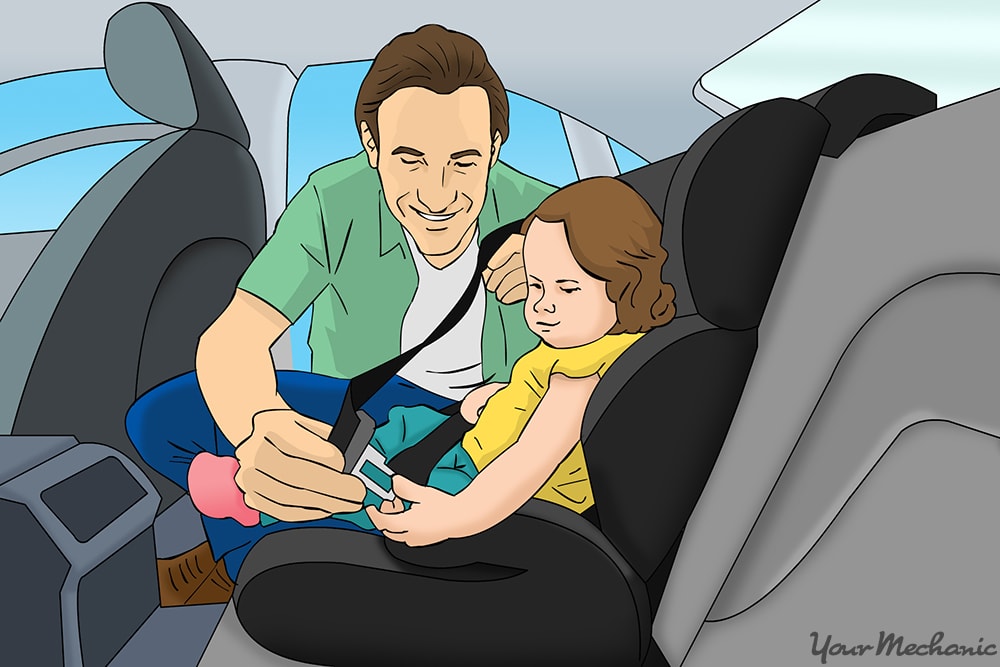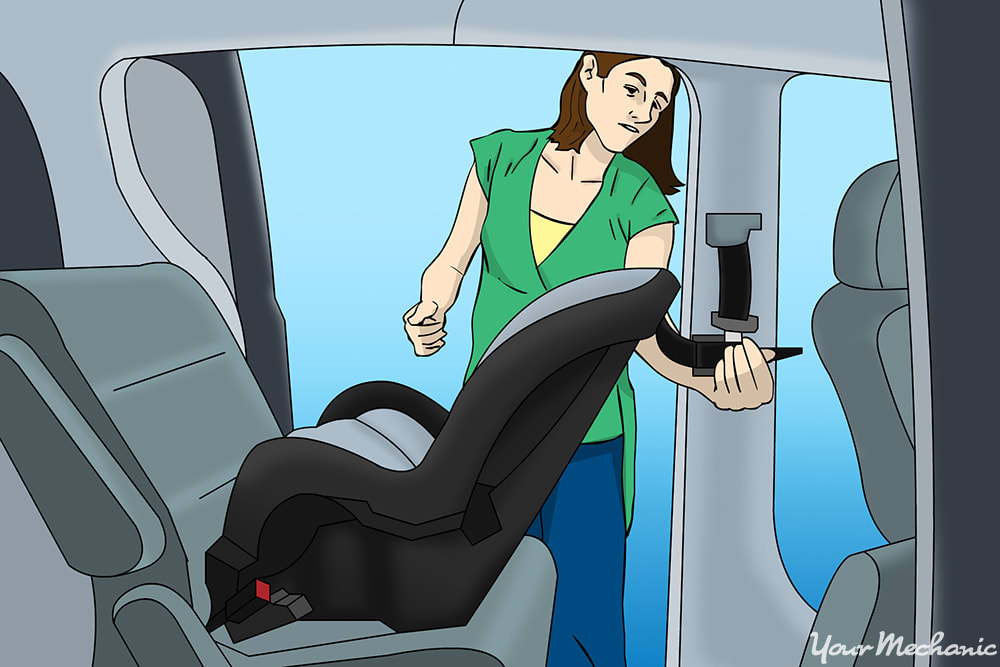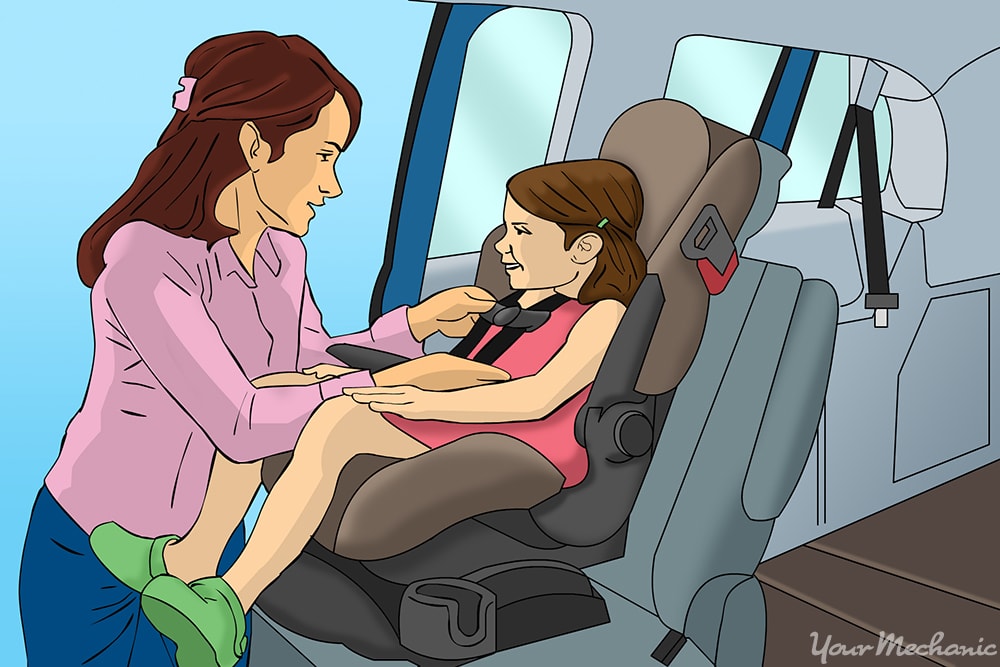

Having a child in your care – either your own or another’s – is a great responsibility. When you go on the road together, there are certain precautions you need to take to minimize the risk of harm in the case of an accident.
Child safety seats can go a long way in protecting children in cars, but they are only effective when installed properly. Be sure to check a child safety seat for proper installation each and every time you and a little one go on an outing.
Method 1 of 2: Check a rear-facing child safety seat installation
Step 1: Check the position of the safety seat in the car. Check whether the child safety seat was placed correctly in the vehicle, facing the rear of the car.
Ensure that the seat is not directly behind an active airbag, and bear in mind the back seat is typically a safer choice than the front seat. In fact, many states have laws requiring the use of the child safety seat on the back seat, when one is available.
Step 2: Lock the carrying handle in place, if applicable. Most carrying handles fold backwards or press down to latch into place.
This prevents them from wildly moving around in the case of rough terrain or an accident and hitting your child in the head. Check that the carrying handle of your child safety seat is locked in place.
Step 3: Adjust the rear-facing safety seat to the proper angle. Most rear-facing safety seats are designed to sit at a specific angle to keep the child’s head firmly against the cushioned headrest.
Follow your seat’s manufacturer’s instructions to achieve this angle. Many seats have a footer indicating the correct angle or allow for the addition of a towel or blanket underneath the front feet.
Check the manufacturer’s instructions for more information about your child’s safety seat model.
Step 4: Attach the seat belt or latch system to the seat. Either thread the seat belt through its proper path or hook the latch connectors to the corresponding anchors indicated on your safety seat’s instructions.
- Note: Never use both the seat belt and latch connectors.
Step 5: Press the safety seat into position. Press the safety seat down into the vehicle’s seat firmly with your hand and tighten the seat belt or latch connectors.
By compressing the seat, you reduce the amount of slack in the tethers of choice, reducing movement of the seat, in the case of rough rides or collisions.
Wiggle the seat to check that there is no more than one inch of movement; if there is more, tighten the seat belt or latch strap further.
Method 2 of 2: Check a forward-facing child safety seat installation
Step 1: Check the position of the safety seat in the car. Check whether the child safety seat was placed correctly in the vehicle, facing forward in your vehicle.
As with rear-facing safety seats, the back seat is the optimal choice of spots.
- Warning: The safety seat should never be positioned in front of an active airbag, to prevent unnecessary harm in the case of an accident.
Step 2: Angle the seat according to the manufacturer’s directions. While most forward-facing child safety seats should be positioned upright to evenly distribute the force of a crash across a little one’s body, there are a few designed to sit at a semi-reclined position.
Check the instructions with your child’s safety seat, to find out how your safety seat model should be positioned.
Step 3: Attach the seat belt or the latch connectors. As with rear-facing safety seats, do not use both the seat belt or the latch connectors systems simultaneously.
When both the seat belt and latch system are in use, it nullifies the way either system of attachment is designed to distribute weight.
Step 4: Press the safety seat into position. Press down on the seat with your hand and take the slack out of either the seat belt or latch connectors.
This ensures a tighter fit, so that the seat stays in place in the event of an accident.
Step 5: Connect the top tether strap. Check that the top tether strap strap attaches to the top tether anchor, according to the seat’s instructions.
This strap prevents the seat from tipping forward in a collision.
Step 6: Test the seat. Wiggle the seat to ensure that there is less than one inch of movement.
If there is more than one-inch of movement, repeat steps 4 and 5, then try the wiggle test again.
- Tip: If you have any doubts about the proper installation of your car’s child safety seat, turn to an expert for help. There are certified inspectors available for this purpose through the United States at child passenger safety seat inspection locations.
Each year, thousands of little ones are killed or otherwise injured due to the improper installation of a child safety seat. Taking the time to check a car’s child safety seat for correct installation and adjustments is a small investment of energy for the peace of mind it provides.
It is essential to check your child’s safety seat, even on short drives, since most accidents occur within a mile of home. That is why it is important to make checking safety seats each and every time you leave in a car with a child a habit.





